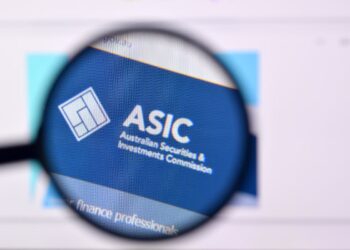If the European experience is
any guide, the growth of
structured product offerings
in Australia is set for a sustained
expansionary phase.
This growth is expected as
investors:
> take comfort in the concept
of capital protection (but want
more than a cash return);
> the products become more
mainstream;
> new players such as tradition
al asset managers, like Perpetu
al, drive further innovation; and
> retail investors become increas
ingly aware of the growing num
ber of alternatives to traditional,
long-only equity products.
Increasingly, the message to
advisers from investors is that
these products help improve
their ability to achieve their
investment goals.
Tax-effective strategies
remain very important, even
with the reduction in marginal
tax rates.
Australian marginal tax rates
are considered high by world
standards and on the positive
side the reduction in marginal
tax rates has increased the level
of free cash flow available for
investments and to service debt.
Investors are happy to
explore newer asset classes in
the chase for higher returns and
to boost income to support their
retirement plans.
Capital protection is a good
option as it minimises the ‘sleep
less night’ factor, especially for
those with strong recollections
of the 1997 Asian market crash and who are apprehensive
about the current state of
global markets.
The structured product
expansion in Australia fol
lows a rise in popularity
in Europe, the leading
market for these vehicles.
Net inflows in Europe
have grown at 25 per cent
per year for the past three
years.
Take the UK, for exam
ple, where four out of five
financial planners see cap
ital protection as one of
the building blocks of a
sensibly diversified port
folio and regularly rec
ommend these types of
products.
In Germany, a retail
investor can buy a capital
protected product from
their local post office
(which also provides
banking services), while in
Switzerland, a typical
affluent client holds
between 5 and 10 per cent
of their portfolio in prod
ucts with some level of
capital protection.
Product structures have
focused on either protect
ed growth or protected
income enhancement. His
torically, this has been
through exposure to tra
ditional equity markets
(initially through indices,
and more recently through
managed funds, including
hedge funds). These struc
tures may also offer lever
aged returns, sometimes
with less than 100 per
cent protection.
The emerging trend has
been to seek protected expo
sure to new markets (such
as emerging markets and
commodities), which is con
sistent with a global search
for new sources of alpha.
In Australia, the
unprecedented growth has
been dominated by pro
tected lending products,
where retail investors have
borrowed to invest in a
capital protected growth
product, a strategy rarely
seen in Europe.
New flows into protect
ed lending managed fund
products from March to
June 2006, were more
than $1 billion, with many
issuers raising more than
double their targets. This
trend continued in the sec
ond half of 2006.
The growth and differ
ence in usage from Europe
can be attributed to:
> lenders willing to
offer 100 per cent loan to
value ratios against pro
tected products, attracting
investors whose relatively
low asset base would oth
erwise limit their gearing
capacity;
> high marginal tax
rates that make gearing a
tax-effective strategy for
high income earners; and
> strong Australian
equity market perform
ance for the past five
years, which makes gear
ing all the more attractive.
Even though the market
has expanded, Australians
hold less than 1 per cent
of their portfolio in capi
tal protected products,
well short of the 5 to 10
per cent level held by their
European counterparts.
We believe further
growth will be driven by
an increasing awareness
that capital protection is
generally relevant for most
investors’ portfolios.
Capital protection is
especially suited to:
> the self-managed
superannuation fund envi
ronment;
> clients who have
focused on property and
who are risk averse about
share market fluctuations;
> higher-net-worth
clients seeking to max
imise tax savings by pre-
paying interest; and
> to those who lack dis
cretionary cash but want
to gain opportunities by
borrowing without risk of
margin calls.
Protected lending will
continue to be seen as a
sound strategy for the
right investor.
However, as sentiment is
changing, it is possible that
the underlying assets used
for protected lending prod
ucts may shift away from
Australian equities over the
next five to seven years.
Alternatively, investors
and advisers may prefer
leverage within a structure
as the means of increasing
return potential to a less
volatile asset class (such as
hedge funds).
Greater focus will be
on an increased use of
protection and structures
to repackage returns
from any asset class in
the form of income (not
just traditional income
asset classes).
An example is restruc
turing the returns from a
protected leveraged bas
ket of stocks to deliver an
income stream rather than
capital growth. This may
also be combined with a
form of ‘insurance’ to cre
ate a longevity product
that protects an investor
who may otherwise out
live their current level of
income and assets.
There may also be
greater demand for com
bined protection and
leverage structures that
allow investors to access
newer sources of alpha in
a way that better suits
their risk profile.
For example, some
investors may want to be
protected but be happy to
trade off some protection
for higher returns.
Products that are either
less than 100 per cent pro
tected or protected unless
there is a fall greater than
a certain percentage may
have increasing appeal.
Capital protected prod
ucts can also add value to
advisers.
Those currently using
capital protected products
explain they need to
search for new sources of
alpha to help their clients
meet their goals.
There is also a need for
new products to attract
and profitably service the
emerging wealthy — new
segments that are impor
tant as advice businesses
seek to grow further.
Simplification of super
legislation has increased
the importance of finding
new ways to attract and
service the ever-growing
retiree segment. This
includes meeting their
need for income (ideally
for their remaining life),
which has been challeng
ing given insufficient super
savings for many.
Poor performance and
sometimes inappropriate
use of high risk strategies,
such as certain mezzanine
mortgage funds, has
heightened the need for
both advisers and
investors to understand
risk-adjusted returns, with
capital protection anoth
er way of providing clients
with peace of mind.
All these factors should
translate into strong
future growth for capital
protected products. Pro
tected lending will remain
healthy, but demand for
other types of capital pro
tected products (such as
those used more often in
Europe) is forecast to
grow over time.
Having established that
a certain type of capital pro
tected product makes sense
for a particular investor’s
portfolio, it’s critical to
assess both the underlying
investment and the struc
ture when selecting the best
available product.
The underlying invest
ment will determine if the
investment is successful or
not.
Unfortunately, a good
structure can’t fix a bad
investment. A good struc
ture can significantly
enhance a good invest
ment (and increase its rel
evance for certain types of
investors).
A bad structure, on the
other hand, can seriously
harm a good investment.
The structure changes the
risk/return profile of the
underlying investment, so
it’s important to understand
how different features
impact risk and return in
different scenarios.
Fees are obviously
important. It’s often diffi
cult to assess the true cost
as fees can be structured
in many different ways.
Most structured prod
ucts include both implicit
and explicit fees.
Implicit fees are often
hidden in derivative
instruments that are
embedded into the struc
tured product.
The only way to deter
mine the exact level of
implicit fees or ‘profit
margin’ is to value the
underlying instrument on
fair market value.
As the derivative instru
ments in many structured
products are complex and
‘exotic’, they are difficult
to value unless you have
access to complicated
mathematical models.
Even the impact of
explicit fees on the expect
ed investor outcome can
be difficult to assess.
For example, there can
be a single management fee
charged on the value of the
portfolio or there could be
two fees, one on the pro
portion of the portfolio
invested in the risky asset
and one on the proportion
invested in the risk-less
asset. Because the portfo
lio allocation between the
risky asset and risk-less
asset is continually chang
ing, the percentage fee that
would be paid each year
will change.
The impact of fees will
clearly vary depending on
how they are structured.
This is definitely an area
where the research houses
can add value. Over the
past few years they have
‘resourced up’ and some
researchers are now
including an assessment of
the implicit fees and pro
viding Monte Carlo sim
ulations that provide a
clearer picture of the
expected outcomes under
different scenarios.
With the size of the
structured product market
continuing to increase, this
trend should continue.
At the end of the day, a
well-structured product is
one that gives investors
the best chance of suc
cessfully meeting their
investment objectives.
Russell Chesler is Product
Structurer with Perpetual .





